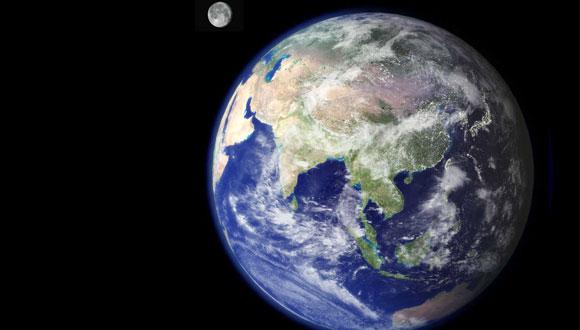Earth as a Planet
The Earth is the only planet in our Solar System that exists in the "habitable zone", the region where liquid water can exist on a planetary surface. This unique situation in the Solar System allowed life to evolve on Earth. Science is now looking for signs of life on other planets as well. In our department we are interested in how all the planets formed, why they have the characteristics we observe today, and what we can learn about other planets that are now being discovered outside our Solar System (extra-solar planets). In addition to the planets themselves, there are other interesting bodies that inhabit our Solar System, such as asteroids and comets. Comets are especially interesting since they contain (frozen) water and even organic compounds that might have influenced the development of living organisms on Earth.
Like our Earth, other planets have clouds, moons, dust storms, lightning, etc. We are interested in applying our knowledge of terrestrial processes to these other worlds. We are also interested in the unseen magnetic fields surrounding many of the planets, the currents and fields in their ionospheres, and the interaction between all the planets with the radiation and particles (solar wind) emitted from our Sun. The Sun has a clear 11-year sunspot cycle, with solar storms impacting all the planets. This field of Space Weather is a new fast growing field of research due to the impact of Solar storms on the near-Earth environment, with direct impacts on satellite hardware, GPS transmissions, and astronauts on the ISS. Researchers in our department are actively involved in a number of space missions funded by NASA and ESA.


